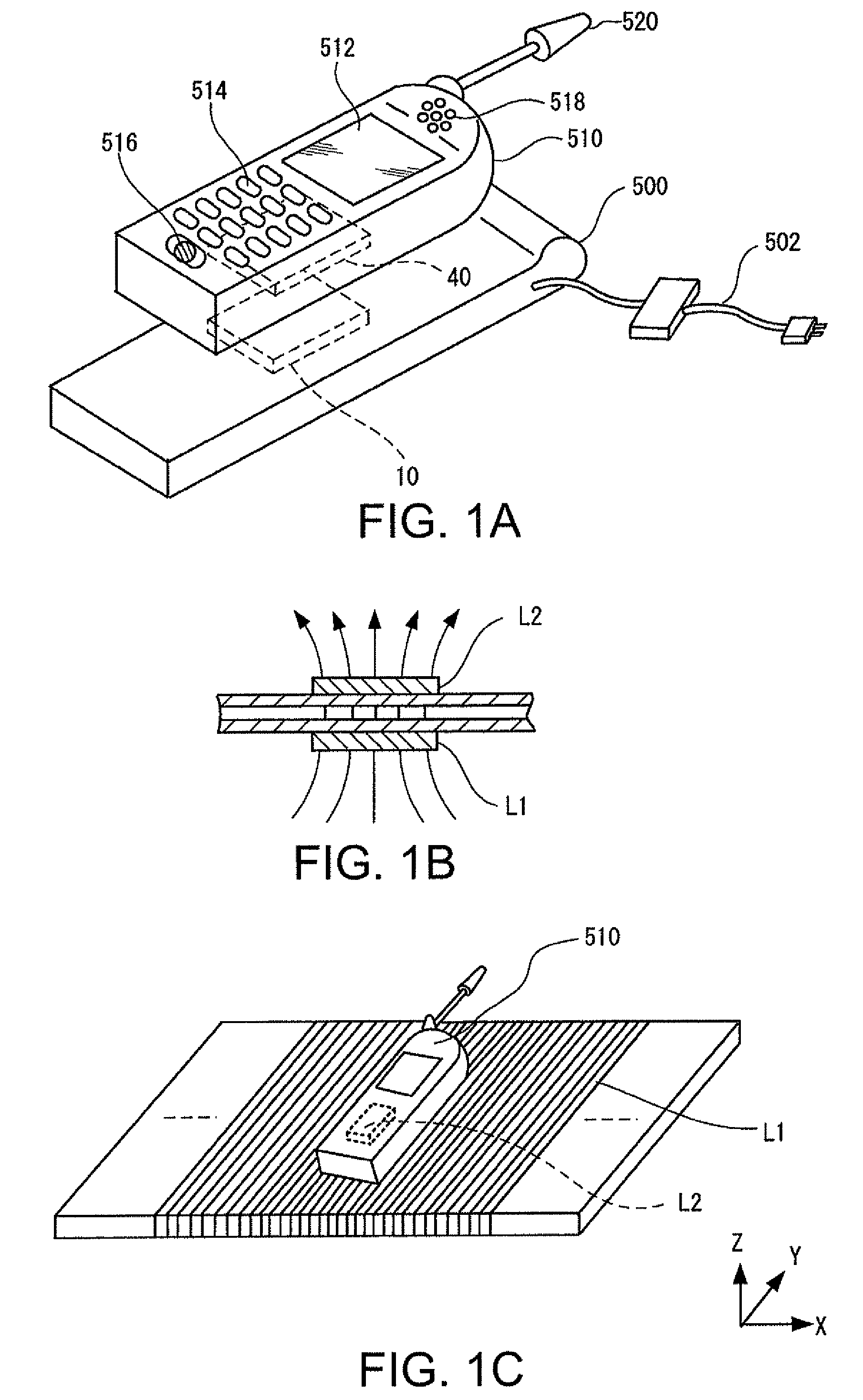Power receiving control device, power receiving device, and electronic apparatus
a power receiving control and power technology, applied in the direction of instruments, inductances, transportation and packaging, etc., can solve the problems of reducing the charging time, power loss, and shortening the charging time of secondary batteries utilizing contactless power transmission, so as to reduce the charging time of secondary batteries, reduce the loss, and simple and small structure
- Summary
- Abstract
- Description
- Claims
- Application Information
AI Technical Summary
Benefits of technology
Problems solved by technology
Method used
Image
Examples
first embodiment
[0071]A contactless power transmission system will now be described.
[0072]Structure of Electronic Apparatus
[0073]FIGS. 1A to 1C are diagrams showing an example of a structure of a contactless power transmission system. FIG. 1A shows an example of an electronic apparatus employing a contactless power transmission method according to a first embodiment of the invention. A charger 500 (a cradle) that is one of electronic apparatuses includes a power transmission device 10. A cell phone 510 that is one of electronic apparatuses includes a power receiving device 40. The cell phone 510 includes a display 512 such as a liquid crystal display (LCD), an operation section 514 composed of buttons and the like, a microphone 516 (a sound input section), a speaker 518 (a sound output section), and an antenna 520.
[0074]Power is supplied to the charger 500 through an AC adapter 502, and then the power is transmitted from the power transmission device 10 to the power receiving device 40 by the conta...
second embodiment
[0228]FIG. 16 is a diagram showing a circuit structure of a power receiving side control circuit according to a second embodiment. In the first embodiment, as shown in FIG. 14, the first NMOS transistor MA and the second NMOS transistor MB are simultaneously turned on so as to reset the hysteresis comparator.
[0229]In the second embodiment, as shown in FIG. 16, a reset switch Q10 (composed of a reset transistor MC, for example) is provided in parallel to the first NMOS transistor MA and the second NMOS transistor MB. Further, a resistance value of the resistance R54 is set to be sufficiently smaller than those of the resistances R52 and R53.
[0230]For the reset of the comparator, the reset switch Q10 (the reset transistor MC) is turned on under a state that the first NMOS transistor MA and the second NMOS transistor MB are off. The resistance value of the resistance 54 is small, so that large amount of current flows through the bias current path including the resistances R50, R51, and...
PUM
| Property | Measurement | Unit |
|---|---|---|
| voltage | aaaaa | aaaaa |
| voltage | aaaaa | aaaaa |
| voltage | aaaaa | aaaaa |
Abstract
Description
Claims
Application Information
 Login to View More
Login to View More - R&D
- Intellectual Property
- Life Sciences
- Materials
- Tech Scout
- Unparalleled Data Quality
- Higher Quality Content
- 60% Fewer Hallucinations
Browse by: Latest US Patents, China's latest patents, Technical Efficacy Thesaurus, Application Domain, Technology Topic, Popular Technical Reports.
© 2025 PatSnap. All rights reserved.Legal|Privacy policy|Modern Slavery Act Transparency Statement|Sitemap|About US| Contact US: help@patsnap.com



